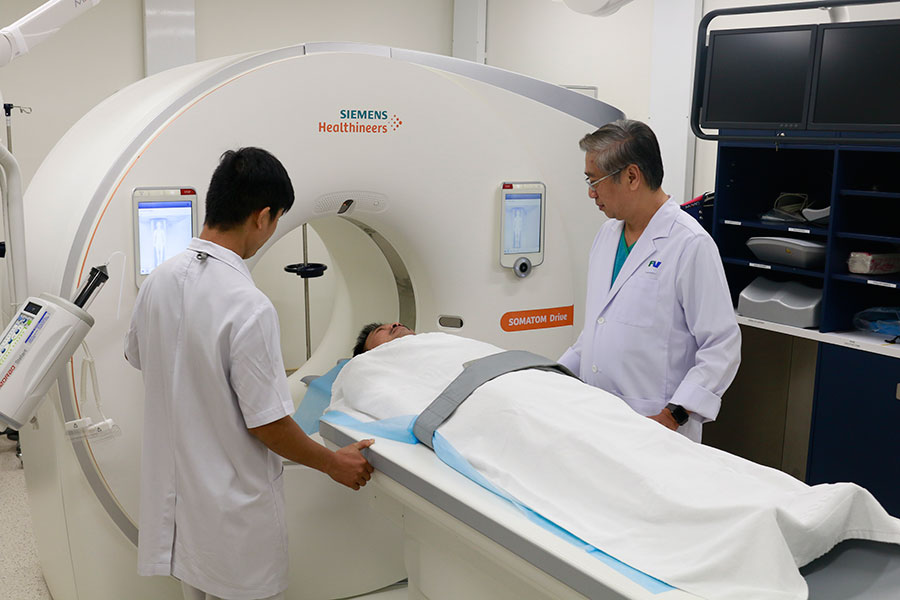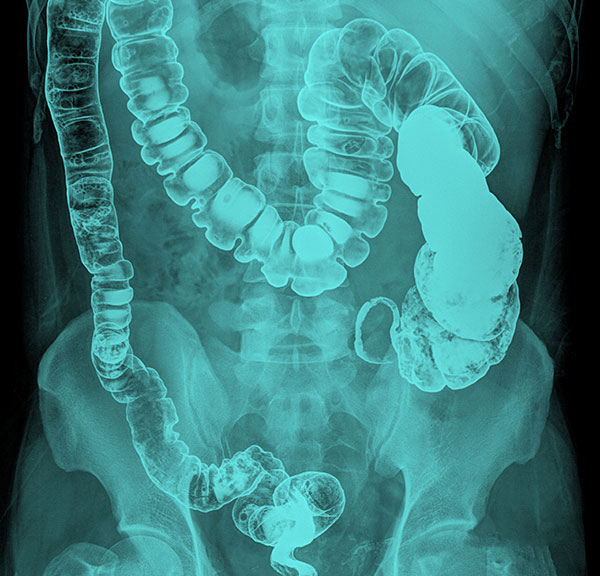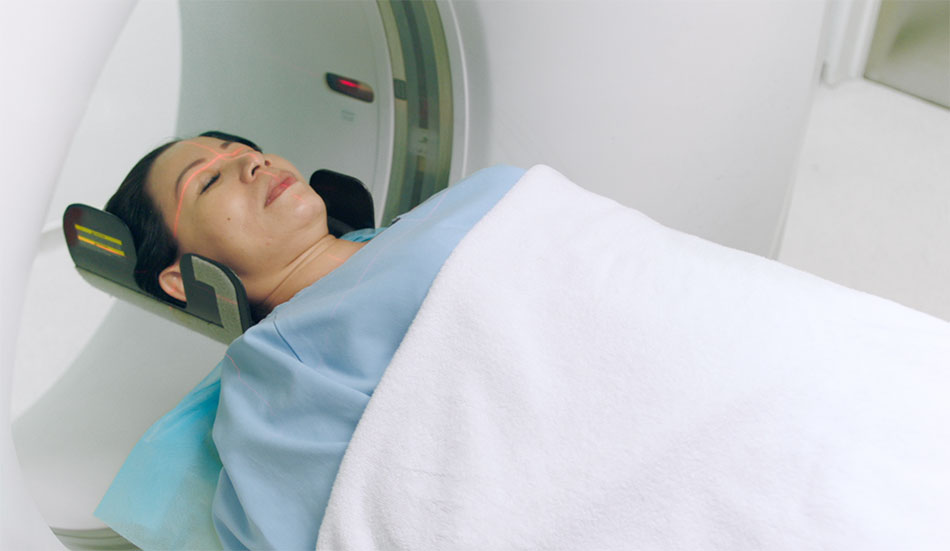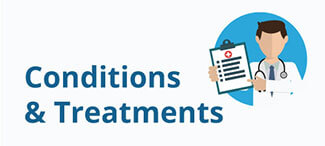What are contrast media and how do they work?
Contrast media, also called contrast agents, are used to improve pictures of the inside of the body produced by X-rays, Computed Tomography (CT), Magnetic Resonance Imaging (MRI), and ultrasound. Often, contrast media allow the doctors to distinguish normal from abnormal conditions.

Contrast media are not dyes that permanently discolor internal organs. They are substances that temporarily change the way X-rays or other imaging tools interact with the body. When introduced into the body prior to an imaging exam, contrast media make certain structures or tissues in the body appear different on the images than they would if no contrast media had been administered. Contrast media help distinguish or “contrast” selected areas of the body from surrounding tissue. By improving the visibility of specific organs, blood vessels or tissues, contrast media help doctors diagnose medical conditions.
Contrast media enter the body in one of four ways. They can be:
- Swallowed (taken by mouth or orally);
- Administered by enema (given rectally);
- Injected into a blood vessel (vein or artery; also called given intravenously or intra-arterially);
- Injected into a cavity of the body (uterus, joints, within the disks or the fluid spaces of the spine etc…).
Following an imaging exam with contrast media, the media is absorbed by the body or eliminated through urine or bowel movements.
There are several types of contrast media:
• Iodine-based and barium-sulphate compounds are used in X-ray and CT scans.
- Contrast media can have a chemical structure that includes iodine, a naturally occurring chemical element. These contrast media can be injected into veins or arteries, within the disks or the fluid spaces of the spine, and into other body cavities.
- Barium-sulphate is the most common contrast media taken by mouth, or orally. It is also used rectally and is available in several forms, including liquid or paste.
- When iodine-based and barium-sulphate contrast media are present in a specific area of the body, they block or limit the ability of X-rays to pass through. As a result, blood vessels, organs and other body tissue that temporarily contain iodine-based or barium compounds change their appearance on X-ray or CT images.
• Gadolinium is the key component of the contrast media most commonly used in Magnetic Resonance (MR) exams. When this substance is present in the body, it alters the magnetic properties of nearby water molecules, which enhances the quality of MR images.
• Saline (salt water), water, water-based gel, CO2 and air are also used as contrast media in some imaging exams.
Which imaging exams use contrast media?
Oral contrast media
Barium-sulphate contrast media that are swallowed or administered by mouth (orally) are used to enhance X-ray and CT images of the gastrointestinal tract as pharynx, esophagus, stomach, small intestine and large intestine (colon).
Rectal contrast media
Barium-sulphate contrast media that are administered by enema (rectally) are used to enhance X-ray and CT images of the lower gastrointestinal tract (colon and rectum).
In some situations, iodine-based contrast media are substituted for barium-sulphate contrast media for oral and rectal administration.
Intravenous/intra-arterial contrast media iodine-based and gadolinium-based
Iodine-based contrast media injected into a vein or arteries are used to enhance X-ray and CT images. Gadolinium injected into a vein is used to enhance MR images. Typically they are used to enhance the internal organs, the gastrointestinal tract, the arteries and veins of the body, the soft tissues of the body, brain and breast.
How safe are contrast media?
Contrast media are safe drugs; adverse reactions ranging from mild to severe may occur but severe reactions are very uncommon. While serious allergic or other reactions to contrast media are rare, a doctor will be available for immediate assistance. FV Hospital possesses the equipment and trained medical staff to assist in providing immediate life saving treatment should this be required.
How should I prepare for my imaging procedure with contrast media?
Because contrast media carry a slight risk of causing an allergic reaction or adverse reaction, you should tell your doctor about:
– Allergies to contrast media, food, drugs, dyes, preservatives, or animals;
– Medications you are taking, including herbal supplements;
– Recent illnesses, surgeries, or other medical conditions;
– History of asthma and hay fever;
– History of heart disease, diabetes, kidney disease, thyroid problems or sickle cell anaemia.
You will be given specific instructions on how to prepare for your exam.

What are the side effects, adverse and allergic reactions?
Barium sulphate contrast media
You should tell your doctor if these mild side effects of barium-sulphate contrast media become severe or do not go away:
– Stomach cramps
– Diarrhea
– Nausea
– Vomiting
– Constipation.
Tell your doctor immediately about any of these symptoms:
– Hives
– Itching
– Red skin
– Swelling of the throat
– Difficulty breathing or swallowing
– Hoarseness
– Agitation
– Confusion
– Fast heartbeat
– Bluish skin color.
You are at greater risk of an adverse reaction to barium-sulphate contrast media if:
– You have a history of asthma, hay fever, or other allergies, which will increase your risk of an allergic reaction to the additives in the barium-sulphate agent;
– You have cystic fibrosis, which will increase the risk of blockage in the small bowel;
– You are severely dehydrated, which may cause severe constipation;
– You have an intestinal blockage or perforation that could made worse by a barium-sulphate agent.
Iodine-based contrast media
Mild reactions include:
– Nausea and vomiting
– Headache
– Itching
– Flushing
– Mild skin rash or hives.
Moderate reactions include:
– Severe skin rash or hives
– Wheezing
– Abnormal heart rhythms
– High or low blood pressure
– Shortness of breath or difficulty breathing.
Severe reactions include:
– Difficulty breathing
– Cardiac arrest
– Swelling of the throat or other parts of the body
– Convulsions
– Profound low blood pressure.
A very small percentage of patients may develop a delayed allergic reaction with a rash which can occur hours to days after an imaging exam with an iodine-based contrast media. Most are mild, but severe rashes may require medication after discussion with your doctor.
Contrast-induced nephropathy
Patients with impaired kidney (renal) function should be given special consideration before receiving iodine-based contrast media by vein or artery. Such patients are at risk for developing contrast-induced nephropathy, in which the pre-existing kidney damage is worsened.
At-risk patients
Some conditions increase the risk of an allergic or adverse reaction to iodine-based contrast media. These include:
– Previous adverse reactions to iodine-based contrast media
– History of asthma
– History of allergy
– Heart disease
– Dehydration
– Sickle cell anaemia, polycythemia and myeloma
– Renal disease
– The use of medications such as beta blockers, NSAIDs, interleukin 2
– Having received a large amount of contrast media within the past 24 hours.
Being at increased risk for an allergic or adverse reaction to contrast media does not necessarily mean a patient cannot undergo an imaging exam with contrast media. Some medications are sometimes given before the contrast media is administered to lessen the risk of an allergic reaction in susceptible patients.
MR-Gadolinium
The contrast media used in MR called gadolinium is less likely to produce allergic reactions than the iodine-based media used for X-rays and CT scanning. Very rarely, patients are allergic to gadolinium-based contrast media and experience hives and itchy eyes. Reactions usually are mild and easily controlled by medication. Severe reactions are rare.
Nephrogenic Systemic Fibrosis (NSF), a thickening of the skin, organs and other tissues, is a rare complication in patients with kidney disease that undergo an MR with contrast media. Gadolinium-based contrast media may be withheld in some patients with severe kidney disease.
What will I experience before and after receiving contrast media?
Barium-sulphate oral and rectal contrast media

If a barium-sulphate contrast media (given orally or rectally) will be used during your exam, you will be asked not to eat for several hours before your exam begins. If the contrast media will be given rectally, you may also be asked to cleanse your colon with a special diet and medication (possibly including an enema) before your exam.
If you swallow the contrast media, you may find the taste mildly unpleasant; however, most patients can easily tolerate it.
If your contrast media is given by enema, you can expect to experience a sense of abdominal fullness and an increasing need to expel the liquid. The mild discomfort will not last long.
Barium-sulphate contrast media are expelled from the body with feces. You can expect bowel movements to be white for a few days. Some patients may experience changes in their normal bowel movement patterns for the first 12 to 24 hours.
Iodine-based contrast media
When an iodine-based contrast media is injected into your bloodstream, you may have a warm flushed sensation and a metallic taste in your mouth that lasts for a few minutes.
The needle may cause you some discomfort when it is inserted. Once it is removed, you may experience some bruising.
Gadolinium-based contrast media
When the gadolinium is injected, it is normal to feel coolness at the site of injection, usually during a minute or two.
The needle may cause you some discomfort when it is inserted. Once it is removed, you may experience some bruising.
For all of the above administrations of contrast media (barium sulphate, iodine-based, and gadolinium-based): if you have not been sedated, no recovery period is necessary. You may resume your usual activities and normal diet immediately after the exam.
It is important to increase your fluid intake after an imaging exam involving a contrast media to help remove the contrast media from your body.
Pregnancy and contrast media
Prior to any imaging exam, women should always inform their caregiver if there is any possibility that they are pregnant. Many imaging tests and contrast media administrations are avoided during pregnancy to minimise risk to the baby.
For CT imaging, if a pregnant woman must undergo imaging with an iodine-based contrast media, the patient should have a discussion with her doctor to understand the potential risks and benefits of the contrast-enhanced scan.
For MR imaging, gadolinium contrast media administration is usually avoided due to unknown risk to the baby, but may be used when critical information must be obtained that is only available with the use of gadolinium-based contrast media.
Intravenous contrast media (iodine and gadolinium) and breast-feeding: manufacturers of intravenous contrast recommend mothers not to breast-feed their babies for 24 to 48 hours after contrast medium is given. However, both the American College of Radiology and the European Society of Urogenital Radiology note that the available data suggest that it is safe to continue breast-feeding after receiving intravenous contrast.
IMAGING DEPARTMENT
FV Hospital, Ground Floor, F Building
Tel: (028) 54 11 34 00



